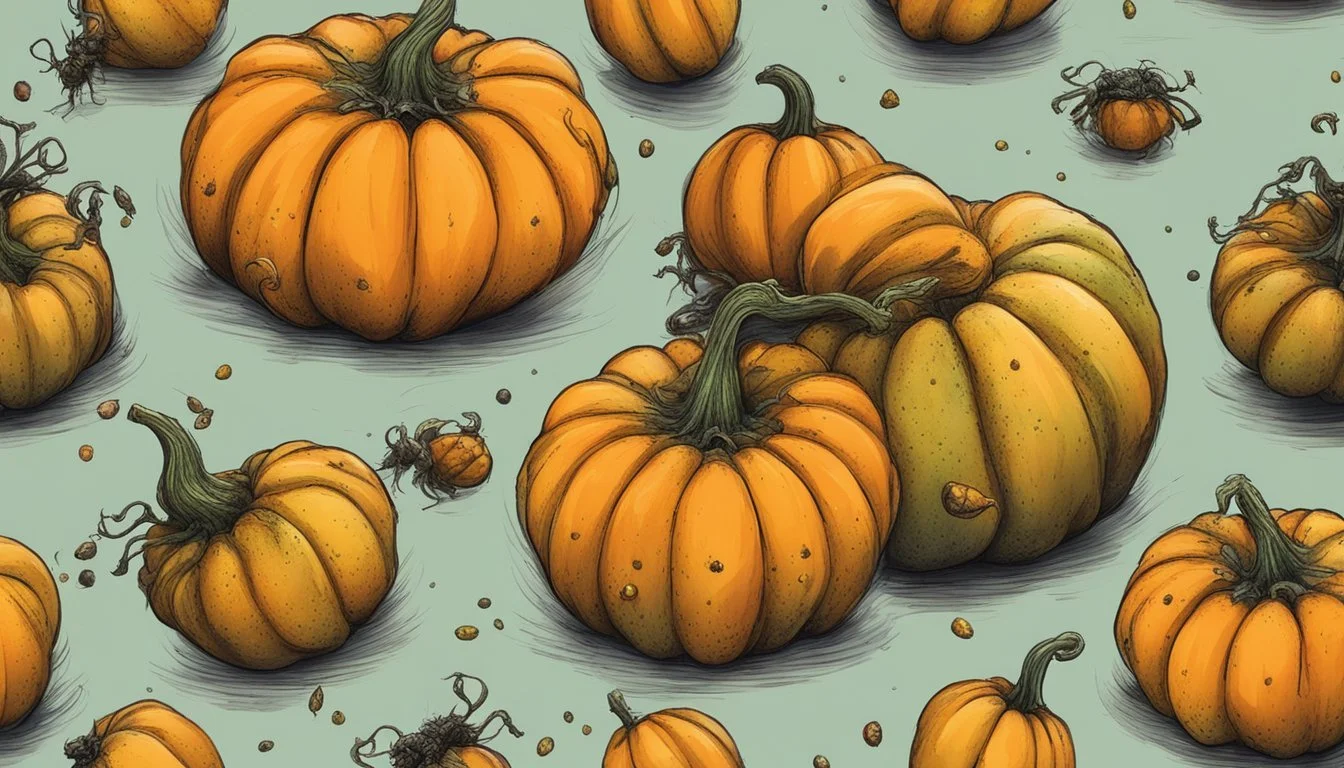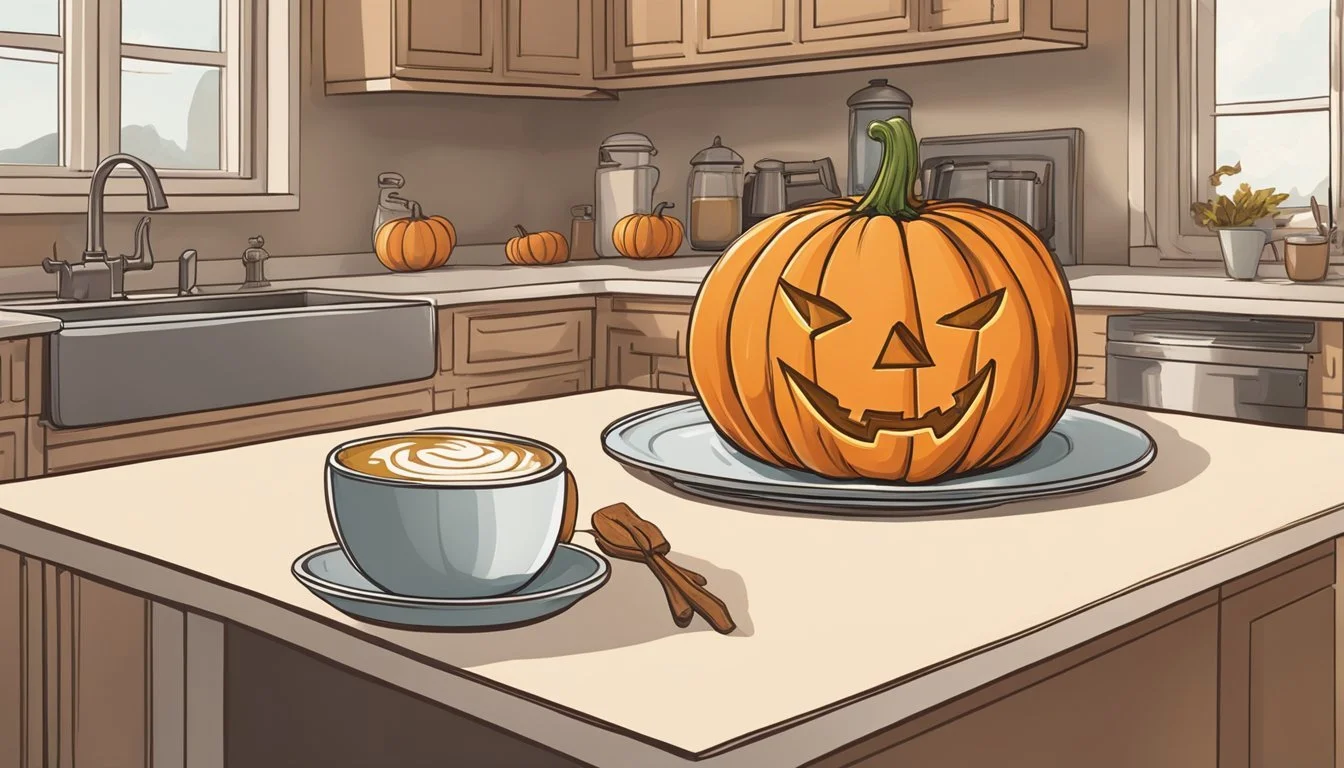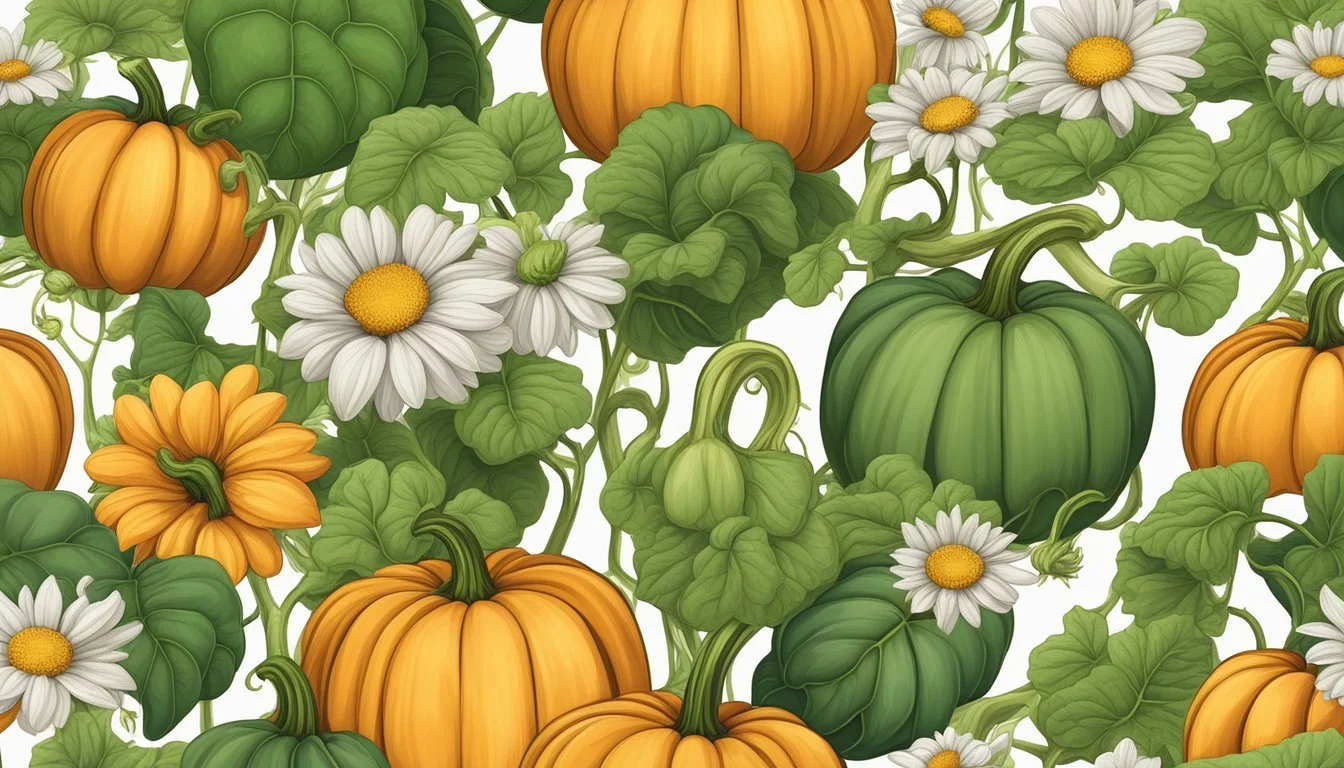How Long Do Pumpkins Last?
Understanding Their Shelf Life
When it comes to the shelf life of pumpkins, various factors play a significant role. On average, an uncarved pumpkin can last from one month at room temperature to up to three months if stored in a cool, dark, and dry place. The longevity of pumpkins makes them not only a staple for autumn decoration but also a reliable source of food throughout the season. Their thick skin acts as a protective barrier, contributing to their impressive shelf life.
Carved pumpkins, however, have a much shorter lifespan due to their exposure to the elements. Typically, they may last anywhere from three days to one week, though some can remain in decent shape for up to two weeks. The key to extending a carved pumpkin's life involves minimizing exposure to warm temperatures and direct sunlight, which can accelerate decay.
For individuals who seek to make the most of their pumpkins, both as decor and in culinary uses, understanding these nuances in storage and care ensures that they get the maximum value from each pumpkin. Properly cured and stored pumpkins may continue to provide enjoyment and nourishment well beyond the Halloween season.
Pumpkin Basics
Understanding the varieties of pumpkins and their optimal harvest time is crucial for determining the longevity and usability of the fruit. Each variety of pumpkin offers unique characteristics, and the timing of the harvest is essential to ensure a pumpkin is mature and ripe for use, whether it be for decoration or consumption.
Varieties of Pumpkins
There is a wide range of pumpkin varieties, each suited for different uses. Commonly, pumpkins can be categorized into two types: carving pumpkins and pie pumpkins. Carving pumpkins are typically larger with a more robust and less edible flesh, whereas pie pumpkins or "sugar pumpkins" are smaller, denser, and sweeter, making them perfect for baking and cooking. Specialty pumpkins offer a variety of shapes, colors, and textures, and these can often be found in a well-stocked pumpkin patch.
Optimal Harvest Time
The optimal harvest time for pumpkins falls generally in late September to early October, as they reach maturity. Harvesting should be done when the pumpkins have achieved a deep, solid color, and the rind is hard enough to resist pressure. A key indicator of a ripe pumpkin is the condition of the stem, which should be firm and about 3 inches long. The fruit should be harvested before the onset of heavy frosts to avoid spoilage and prolong shelf life.
Storing Pumpkins
Proper storage of pumpkins can significantly extend their shelf life, whether they are carved or uncarved. The key elements to consider are temperature, humidity, and the overall environment.
General Storage Guidelines
Pumpkins thrive best in cool, dark, and dry conditions. They should be kept away from direct sunlight and should not be stored in areas prone to moisture, as this can speed up decomposition. Ideally, pumpkins should be kept at a steady temperature to maintain their quality and prolong their shelf life.
Long-Term Storage Tips
For uncarved pumpkins, storing them in a cool (50-55°F), dark place like a pantry or cellar can help them last up to several months. It's important to ensure they are not in contact with the ground and are spaced apart to prevent moisture build-up and rot. For long-term storage, regular inspection for signs of spoilage is essential.
Storage Options:
Pantry or cellar
On top of cardboard or wooden boards
Spaced out to avoid moisture build-up and allow air circulation
Storing Carved Pumpkins
Carved pumpkins have a much shorter shelf life due to their exposure to the elements and the carving process. To extend their life for a few extra days, one might cover them with plastic wrap and store them in the fridge when not on display. The cold temperature slows down microbial growth that causes rotting.
Optimum Storage Conditions:
Refrigeration
Wrapped in plastic to retain moisture
Limited time outside to avoid temperature fluctuations
Storing Uncarved Pumpkins
Uncarved pumpkins, if stored properly, can last from a month at room temperature to 3 months in ideal conditions. They should not be exposed to freezing temperatures as this can cause them to soften and rot upon thawing.
Best Practices:
Store in a cool, dry, dark place like a basement or garage
Keep off the ground and on cardboard to prevent rotting
Avoid freeze-thaw cycles
Remember that inspection and rotation are crucial for any long-term pumpkin storage strategy. Any signs of decay should be addressed promptly to prevent it from affecting other stored pumpkins.
Factors Affecting Pumpkin Longevity
Pumpkin longevity is notably influenced by environmental and storage conditions. Understanding and managing these factors can significantly prolong the lifespan of pumpkins.
Environmental Conditions
Light: Pumpkins exposed to direct sunlight are prone to decomposition due to increased temperatures and light intensity. Weather: Outdoor elements, such as rain and frost, can hasten the rotting process, while cool, dry weather conditions tend to preserve pumpkins longer.
Storage Conditions
Temperature: A consistent storage temperature between 50°F and 55°F is optimal for maintaining pumpkin freshness. Humidity: Low humidity levels are preferred to prevent mold and mildew growth. Pumpkins stored in conditions that are too wet or too dry can deteriorate faster.
Preservation Techniques
To maximize longevity, pumpkins require proper preservation techniques. This is essential for maintaining their appearance and preventing decay for as long as possible. Utilizing effective methods for both curing and applying protective measures can significantly extend the life of a pumpkin.
Curing Process
Curing pumpkins develops a hard rind, reducing the chance of rot. This process involves keeping the pumpkins in a warm (about 80-85°F), dry location with good air circulation for approximately 10 days. Afterward, storing them in a cool, dry place ensures a shelf life that can last several months.
Protective Measures
Protective measures are vital to guard against mold and bacteria. A solution of diluted bleach — one tablespoon of bleach per quart of water — can be applied by spraying or wiping the pumpkin to sanitize its surface. Alternatively, some opt for a mixture of water and vinegar as a natural disinfectant. These protective sprays should be applied regularly, and pumpkins should be kept away from direct sunlight and heat to prevent degradation.
Signs of Deterioration
When assessing the condition of pumpkins, spotting signs of deterioration early can extend their lifespan. Recognizing symptoms of decay and understanding diseases are crucial steps.
Recognizing Decay
Visual Indicators:
Soft Spots: These indicate the breakdown of the pumpkin's firm structure and often precede further decay.
Discoloration: Shades of brown or black on the skin might signal rot.
Wrinkled or Shriveled Skin: A sign that the pumpkin is dehydrated and deteriorating.
Tactile and Olfactory Clues:
Mushy Texture: A pumpkin yielding to gentle pressure can mean the inside is rotting.
Unpleasant Odor: An off-putting smell is a clear indicator that the pumpkin has gone bad.
Pumpkin Diseases
Common Afflictions:
Powdery Mildew: Appears as a white, powdery coating on leaves and can affect the pumpkin's longevity.
Downy Mildew: Characterized by yellow spots on leaves that turn brown; this disease can hinder the pumpkin's ability to resist decay.
Gummy Stem Blight: Identified by the dark, wet lesions it causes, a sign of advancing rot.
Fungal Infections:
Black Rot: Causes firm, black rot on the pumpkin's exterior and interior.
Fusarium Rot: Often noticeable by a pink or orange fungal growth accompanied by rotting areas.
Monitoring pumpkins regularly for these signs helps in taking action to prevent entire crop loss and ensures the longevity of the produce.
Practical Uses of Pumpkins
Pumpkins offer a variety of applications that extend beyond their role as a seasonal symbol. Their culinary versatility, iconic presence in festivities, and aesthetic appeal for decorations underscore their multifaceted nature.
Cooking and Recipes
Pumpkins are a staple in the culinary world, especially for making comfort food. Their flesh can be used in a multitude of dishes, including soups, purees, and the classic pumpkin pie. For cooking, specific varieties of cooking pumpkins, like Sugar Pie pumpkins, are preferred due to their sweeter, more concentrated flavor and smoother texture.
Roasted Pumpkin Seeds: Nutritious and can be seasoned in various ways.
Pumpkin Soup: Typifies comfort food, blending the squash's natural creaminess.
Pumpkin Pie: A quintessential fall dessert, celebrated for its spiced and rich filling.
Pumpkin Carving
Carving pumpkins is a cherished seasonal craft associated with Halloween. Carved pumpkins, also known as jack-o-lanterns, are created by hollowing out a pumpkin and cutting designs into its surface. They last from 3 to 10 days and are a popular activity that sparks creativity and family bonding.
Traditional Jack-o-Lantern: The classic carved face that is synonymous with Halloween.
Intricate Designs: More complex carvings that can feature scenes, symbols, or artistic patterns.
Decorative Purposes
Pumpkins serve as beautiful elements of fall decor, with both uncarved and carved varieties enhancing the seasonal ambiance. Gourds and smaller pumpkins can be arranged in clusters for an autumn-centred display.
Front Porch Arrangements: Pumpkins can greet guests with a festive feel.
Table Centerpieces: Mixed with other fall elements like leaves and candles for elegant settings.
Unlit Carved Pumpkins: They can adorn pathways and steps, contributing to the aesthetic even without illumination.
Troubleshooting Common Issues
Proper storage and handling of pumpkins can mitigate common issues such as pest infestations and the growth of mold and bacteria. Careful attention to environmental factors and routine inspections play crucial roles in preserving pumpkin quality.
Pest Infestations
Pumpkins can attract a variety of pests, ranging from insects to larger wildlife. Common pests include squash bugs, cucumber beetles, and rodents. To ward off these invaders, one can employ physical barriers such as netting or fences. For insects, organic insecticides or natural deterrents like neem oil may be effective. Regularly inspecting pumpkins for signs of damage, such as holes or gnaw marks, is essential for early detection and management of pest issues.
Physical barriers: Netting, fences
Insect deterrents: Organic insecticides, neem oil
Inspection: Check for holes, gnaw marks
Preventing Mold and Bacteria Growth
Moisture and warm temperatures can create an ideal breeding ground for mold and bacteria on pumpkins. It's important to store pumpkins in a cool, dry environment, ideally between 50-55°F (10-13°C). If carving, one should clean the interior thoroughly and consider applying a bleach solution to kill surface bacteria. Unblemished pumpkins with intact stems are less likely to develop mold.
Storage conditions: Cool (50-55°F, or 10-13°C), dry
Carved pumpkins: Clean interior, bleach solution
Pumpkin selection: Unblemished, intact stems
Creative Exploration
When it comes to pumpkins, their use extends well beyond mere decoration. In the spirit of creativity and resourcefulness, individuals often find unique ways to utilize pumpkins, such as crafting and cooking.
Crafting with Pumpkins
Craft enthusiasts often see a pumpkin as a blank canvas for artistic expression. They use paint to bring colorful designs to life, adhering to seasonal themes or personal creative visions. Utilizing stencils can assist in achieving precision and symmetry in the designs. For those looking to preserve their pumpkin crafts, proper sealing and care can extend the lifespan of the artwork.
Materials Used:
Acrylic or spray paints
Stencils for outlined designs
Sealants to protect the paint
Roasting Pumpkin Seeds
After the fun of crafting, the seeds inside a pumpkin can be turned into a delicious snack. Roasted pumpkin seeds are a healthy treat, and preparing them involves cleaning, seasoning, and roasting until crisp. The seeds can be flavored to one's preference, often with salt, but also with sweet or savory spices.
Steps for Roasting:
Remove seeds from pumpkin and wash thoroughly.
Pat seeds dry with a paper towel.
Toss seeds with a bit of oil and desired seasonings.
Spread seeds evenly on a baking sheet.
Roast in a preheated oven at 300°F (150°C) for about 30-45 minutes, stirring occasionally, until golden brown.
Pumpkin Lifecycle
Understanding the pumpkin's journey from a tiny seed to a table-ready fruit involves considering its growth stages and storage practices. The lifecycle of a pumpkin is a fascinating process that gardeners and farmers closely monitor to ensure optimum growth and longevity.
From Garden to Table
The life cycle of a pumpkin begins in the garden, where a gardener plants the seed. This initial stage is critical as it sets the foundation for the pumpkin's development. After planting, the seed germinates and sprouts, emerging with cotyledons, the seed's first leaves. As it grows, the vine develops true leaves, which are darker green and jagged, signaling the transition to more mature growth stages.
The Cycle of Pumpkin Growth
The pumpkin growth proceeds through several stages:
Seed Germination: The seed transforms into a sprout, pushing through the soil surface.
Seedlings: These young plants exhibit their first leaves.
Vine Growth: The pumpkin vine stretches out with tendrils, flowers, and eventually, small pumpkin bulbs.
Fruit Development: The bulbs grow into pumpkins, taking shape beneath the wide leaves and along the vine.
Maturation: A mature pumpkin is harvested from the garden or farm, often in late September to early October.
A pumpkin's shelf life post-harvest can widely vary; when stored properly—cool, dry conditions around 60 degrees Fahrenheit and with 60% humidity—whole, uncarved pumpkins can last up to 3 months. However, the longevity decreases once pumpkins are carved, with an average span of three to five days before decomposition accelerates, greatly influenced by factors like weather and storage practices.






